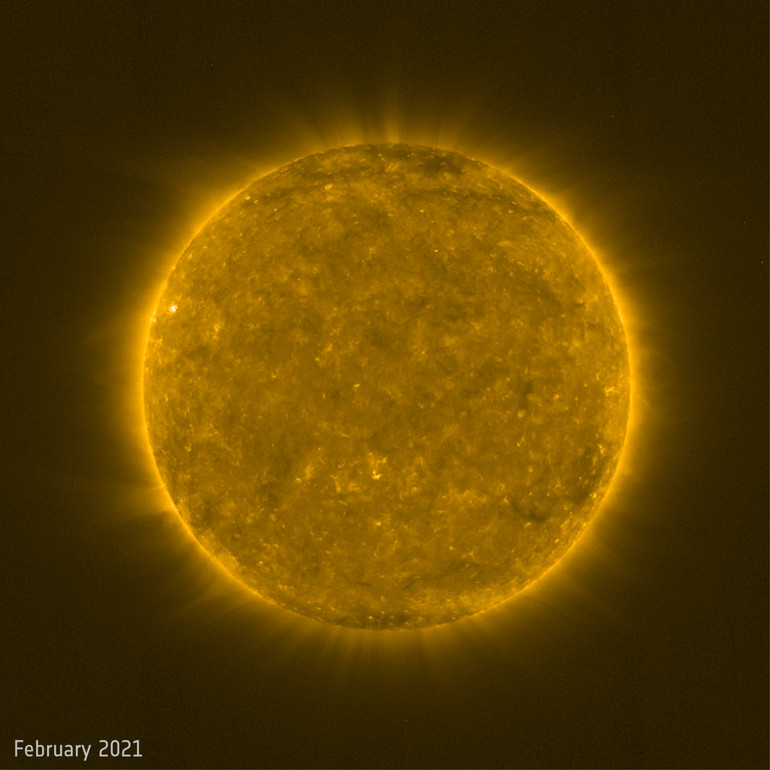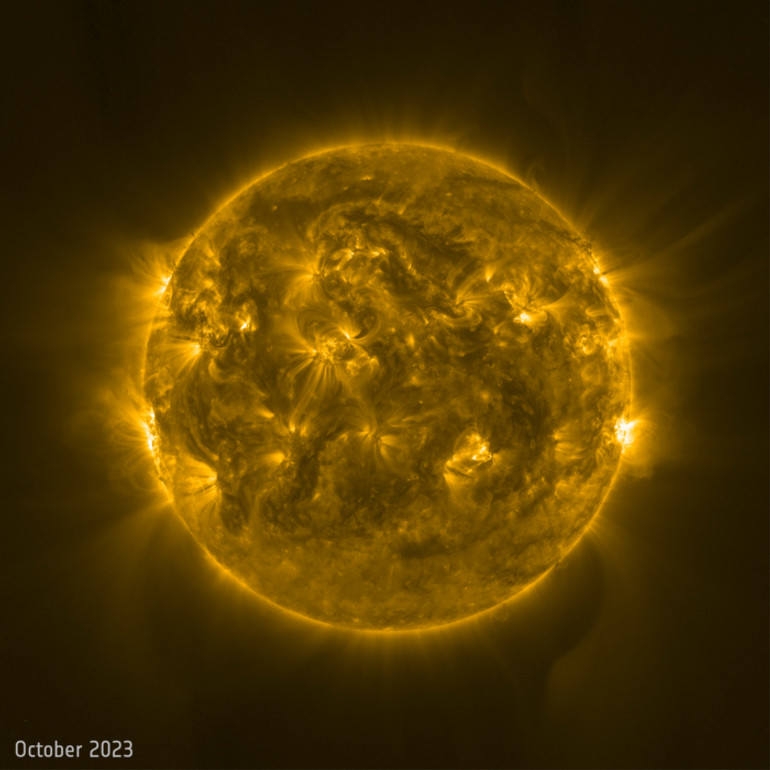Pictures of the spacecraft demonstrate how the Sun has changed in two years – News
[ad_1]
The Solar Orbiter spacecraft took new pictures of the Sun – on them you can track the process of formation of sunspots.
The change in the situation is visible in images dated February 2021 and October 2023, writes Science Alert.
Scientists note: during the minimum solar activity in 2019, there were only a few spots on the Sun. However, activity has slowly increased since then.
The Sun was still relatively calm in February 2021, but an image taken in October 2023 shows that things are getting worse.

Image of the Sun for February 2021
According to scientists, the solar cycle has been studied in detail since 1843, when the German astronomer Samuel Schwabe began his 17-year observation of the changing sunspots.
Since then, astronomers regularly observe the “ebb and flow” of the sunspot cycle every 11 years.
The sun is a huge ball of plasma, an electrically charged gas that has the ability to move the magnetic field. When the Sun rotates, the magnetic field “pulls” behind it. But due to the fact that the Sun rotates faster at the equator than at the poles, the lines of force are wound more and more tightly, scientists note.
They add: Under this enormous stress, the field lines occasionally break or break through the Sun’s surface, and when this happens, a sunspot can be seen.

Image of the Sun for October 2023
These dark spots on the visible surface of the Sun are regions where a denser concentration of solar matter prevents heat flow to the visible surface. This leads to the formation of colder and, accordingly, darker spots on the Sun.
Astronomers note that the slow rotation of the Sun and the “continuous winding” of the field lines means that sunspots are becoming more numerous as the field becomes more and more “distorted”.
To try to help understand this complex cycle and unlock other mysteries of the Sun, the European Space Agency launched its Solar Orbiter on February 10, 2020. Its mission is to explore the polar regions of the Sun and understand what drives the 11-year solar cycle and causes the outer layers of the Sun’s atmosphere to heat up.
This cycle is expected to culminate in 2025.
According to the scientists, understanding the cycle is not only of scientific interest – it is vital to minimize damage to ground and orbital systems, as well as to understand the impact of this process on life on Earth.
We will remind you that earlier we wrote that a powerful flare occurred on the Sun, which led to the disconnection of radio communication on Earth.
[ad_2]
Original Source Link











